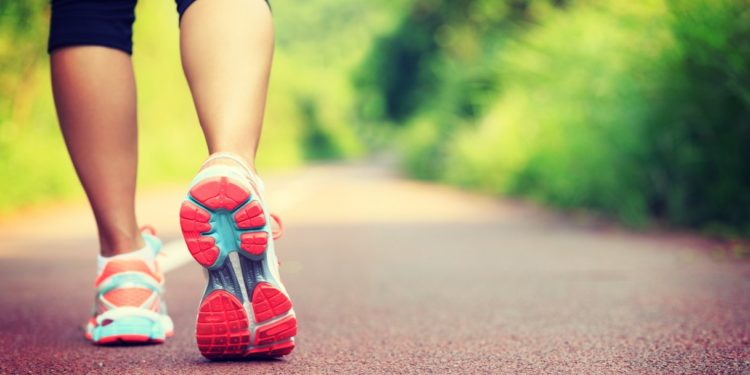Table of Contents
Walking: benefits and tips
Bilateral action par excellence, walking allows you to make the two hemispheres work at the same time and the two symmetries of the body.
To walk is good for the body, but how much and how to do it? If you decide to walk at least 2 to 4 hours per week you will first of all benefit the heart, reducing the risk of heart attacks and heart disease. Always dedicating the same hours to walking, the arteries and veins also benefit, as much as the pressure conditions. Excellent habit for those living with diabetes. If you walk fast enough for 3 hours a week, feeling the agile step and performing well the roll of the foot in all its phases of the step, you will also have benefits at the level of the back, going to decrease the lumbar load and also making certain pains disappear which are usually transient; walking, in other words, you are going to strengthen the paravertebral muscles and relieve the discs between the vertebrae, bring oxygen to the whole back and therefore blood supply. Obviously, to do this you need the right footwear and you must not have loads on the shoulders and back.
The only real important precaution before start walking regularly: check the pace and the way you distribute the mass and manage it through the support. You can rely on a physiotherapist or osteopath or an attentive personal trainer who can help you understand how you are used to loading the weight, on which leg, on which part of the foot, if you tend to supinate or rather pronate. These precautions are important in order not to carry the habits that the body has simply chosen for the management economy of recovery from injuries or from attitudes that reflect emotional states. Also great idea to do some Pilates sessions on the reformer or bodyweight for feel good support and strength in the legs.
In general, walking improves mood, less appetite and bowel regularization. The whole metabolism is activated and a lot of endorphins are put into circulation. If walking is difficult for you or you lack the grit to start, try to remember that just doing it for 30 minutes 5 times a week you have excellent benefits, you maintain muscle tone and the right weight. It takes a little bit of consistency, but the effort pays off thanks to immense global well-being.
Running: reasons and contraindications
As we know the first benefit of the ride lies in weight regulation. Running burns several calories and the body finds its optimal weight. Running is also good for the brain as it promotes the regeneration of brain nerve cells. It also benefits the sleep-wake rhythm and the management of anxious and depressive states. You feel good, you experience a well-being that touches different spheres and that is released even hours and hours after the race.
You shouldn’t think that running automatically decreases any states of cellulite or water retention; in some cases, on the contrary, running becomes slightly counterproductive as the micro-injuries caused by running during the impact with the ground seem to increase this breakage, in addition to the fact that lactic acid has negative effects on tissue oxygenation and circulation. If you run in winter you must choose a clothing technician suitable for avoiding airway disorders.
Running or walking?
It should not be thought that running is an alternative to walking, as the step takes a completely different form. In running there is an aerial phase, while in walking one foot is always in support with the ground, the legs are kept mostly straight and the center of gravity remains above the leg. So change the way you manage your weight and swing forward. This should not be underestimated as the load on the knees and ankles it has a completely different impact. The propulsive movements in which the lower limbs are involved change completely and the lower limbs have different oscillations. In running, the posture should be erect and slightly forward. If you want go from walking to running it is necessary to devote oneself to preparatory exercises that study the propulsion of the foot and allow to cushion strong impacts.
Running offers better value benefits for health over time, but risks having counterproductive effects on the joints, if managed in an approximate way. The key point for the choice lies in the satisfaction level and goals. From the point of view of weight loss, running means burning in an important way, but with consistency you can achieve the same results even in walking. Another fundamental factor for choosing one or the other practice lies in the cartilage: if we know that the our cartilage tends to thin or shrink, it is better to dedicate yourself to walking, so as not to further damage our cushioning power. Ultimately, if we are overweight, it is advisable to avoid running directly, it is better to lighten yourself first with regular walking sessions and at a brisk pace, so as not to overload the spine.
Read also











